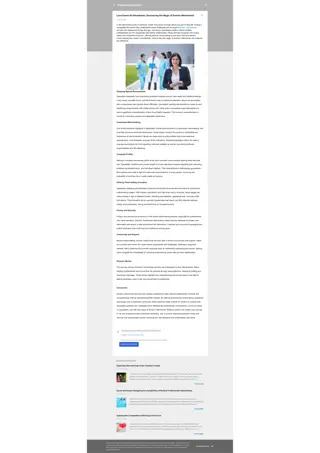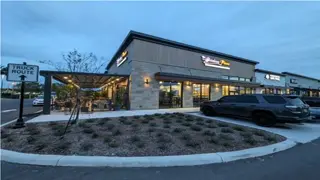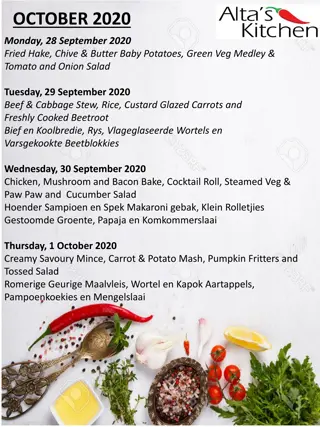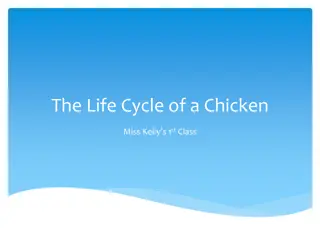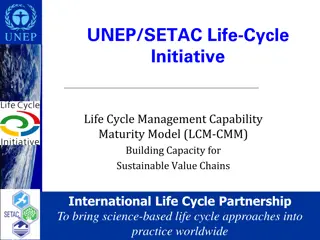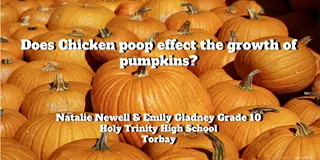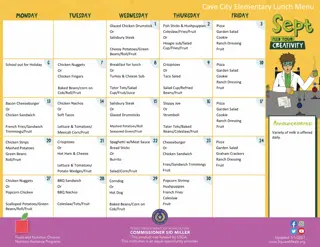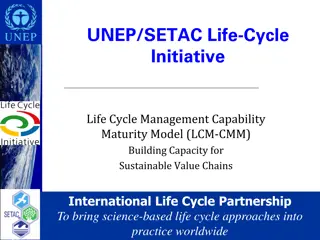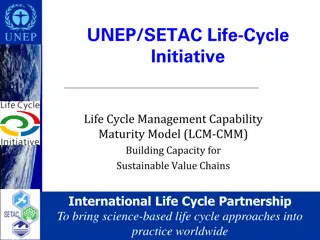Exploring the Life Cycle of a Chicken: Educational Journey
Delve into the fascinating journey of a chicken's life cycle through an engaging explanation text. Discover the stages from egg to adult chicken, compare it with the Monarch butterfly cycle, and embark on a creative storytelling activity. Engage with the process of writing and illustrating to enhance learning.
Download Presentation

Please find below an Image/Link to download the presentation.
The content on the website is provided AS IS for your information and personal use only. It may not be sold, licensed, or shared on other websites without obtaining consent from the author. Download presentation by click this link. If you encounter any issues during the download, it is possible that the publisher has removed the file from their server.
E N D
Presentation Transcript
WEEK 3: EXPLANATION TEXT LIFE CYCLE OF A CHICKEN.
WHAT IS AN EXPLANATION TEXT? Grown ups, please hide the answer to see if your child can remember An Explanation Text is a non-fiction piece of writing which describes a process such as how a car is made for example
MONDAY 4THMAY 2020 WALT: SEQUENCE EVENTS As we continue with Sunny s journey, he finds himself in Texas in a chicken farm! So within English this week we are going to create a explanation text on the life cycle of a chicken. What do you already know about chickens? (Tell your grown up) Today we will be firstly looking at the features of a explanation text and then the life cycle of a chicken, we will then create a story snake to show the life cycle. Grown up s before going to the next slide, why not ask your child if they can recall any features of an explanation text ..
STARTER ACTIVITY FEATURES OF A EXPLANATION TEXT. Using this key to help you, can you identify some of the features of a explanation text on the WAGOLL The WAGOLL will be on the next slide
The life cycle of a Monarch butterfly: Did you know that a butterfly begins life as a caterpillar? Butterflies are insects which go through a complete life cycle made up of four stages. This includes egg, larva, pupa and the adult stage. Egg stage First, a female monarch butterfly lays a small, round egg on a suitable leaf. This is important because once the egg hatches the leaf will provide all the food. Then, after around four days the egg hatches and a larva also known as a caterpillar emerges. Larva stage: Then in the larva stage, the small caterpillar gets straight to work and begins eating the leaf around it. For around 2 weeks the caterpillar eats and eats and sheds its skins four times in this stage as a result of it becoming larger. Pupa stage: After that, when the caterpillar is two weeks old it will find a place to create its chrysalis and shed its skin one last time. This is usually on the underside of a leaf. This is known as the pupa stage and lasts for 8 to 10 days. Inside the chrysalis, the caterpillar is developing wings to transform into a beautiful butterfly. Adult stage: Finally, once the 10 days have been completed the butterfly slowly emerges from the chrysalis and it begins to create a straw out of its proboscis. It then sucks the nectar through the straw. The blood pumps through the body of the butterfly and into the developing wings therefore causing them to fully expand in a few minutes. The transformation of a butterfly is then complete.
LIFE CYCLE OF A CHICKEN Today we will be looking at the life cycle of a chicken, watch the video that will go through the stages of the cycle. Then we would life you to create a story snake going through the life cycle, at each stage you will need to: 1. Draw a small labelled picture of that stage. 2. Write a short sentence describing what stage of the chicken life cycle this is.
STORY SNAKE MODEL Refer to Mr Hopkin s Morning Welcome for example of a story snake if you are unsure.
TUESDAY 5TH MAY 2020 WALT: WRITE IN THE PRESENT TENSE. When writing a explanation text we need to write in the present tense. Why do you think that is? The present tense is used when describing an action that is currently happening, or an event that happens regularly. Today you will be given a range of different sentences that are in past tense and you will then edit/rewrite these sentences so that they are in the present tense.
TYPES OF PRESENT TENSE Let s remind ourselves of the different ways we can write the present tense:
C O N V E R T I N G P A S T T E N S E I N T O P R E S E N T T E N S E Main task: Extension As a extension can you rewrite this passage of text in the present tense. Jane will be going to Glasgow, for the Commonwealth Games. She will be competing in the marathon, which will be just over 26 miles long. She will have a team of runners to help her. The goal she will have will be to win the gold medal. She will do her best at all times. She will take a lot of beating, as she will be the best in the world.
WEDNESDAY 6TH MAY 2020 WALT: CREATING TIME OPENERS AND SENTENCES STARTERS. Today we are going to look at sentence openers for our explanation text. On each slide we will be looking at different openers you can use. We would then like you to go back to you story snake and add in a sentences opener that you could use. These will be used later in the week to write your explanation text.
OPENING PARAGRAPH STATEMENTS First we will look at openers you might use for your introductory paragraph This explanation will . . . The purpose of this explanation is to . . . This explanation is intended to . . . This explanation is designed to . . . The following information . . . It can be difficult to...so... Firstly, I Following that I intend to . . . The purpose of this explanation is to help . . .
TIME CONJUNCTIONS Now onto time conjunction. We have looked at lot at time conjunctions and how we can use them to show the time at which an event happened, these will be really important in our life cycle of a chicken to give the reader a chronological idea of when the events happened. Here are some examples: o To begin with... o Firstly . . . o Finally... o Next... o Next... o After that o After... o Following that . . . o Afterwards . . . o After a while... o After that... o Before long . . . o When... o First... o At this point... o First of all . .. o Lastly...
CAUSE AND EFFECT CONJUNCTIONS Causal conjunctions gives the reader an indication on why something has happened. This can be used in our text to explain why certain events take place at different stages of the cycle. o o o o o o o o o o So This causes . . . As a result ... This results in . . . This leads to... This is because . . . This was because . . . Because . . . Therefore . . . Furthermore . . .
YOUR TURN Now look back at your story snake and add in sentence openers you could use.
THURSDAY 7TH MAY 2020 WALT: WRITING EXPLANATION. Today we want you to write your explanation text on the life cycle of a chicken. Remember to use all the things we have looked at this week to help you. You should make sure you are following your story snake to help you know what to include when.
EXPLANATION Tells us how something works or gives us information about something. Purpose
STRUCTURE A general statement is used to introduce the topic of explanation. There are lots of things we can do to stay healthy and to keep illnesses away. A series of logical steps explaining how or why something occurs. The best drinks for staying healthy are water and milk. Fruit juices can be good for us but they can have a lot of sugar in them. Fizzy drinks are not good for us at all. Steps continue until the final state is produced or the explanation is complete.
FEATURES Explanations are written in the present tense. Many birds fly south Conjunctions that signal time are used in explanations. then next several months later Explanations are written using causal connectives. because so this causes
FEATURES Title explains what the text is for life cycle of a chicken Opening Statement about the subject Clear, simple points about why or how something occurs Technical words where appropriate Conjunctions e.g. because, resulting in Present tense Summary Paragraph
Decide whether to use diagrams, charts, illustrations or flow charts to help explain. Use a clear title that indicates what you are writing about. Title and Introduction Use the first paragraph to introduce the subject to the reader. Try to make the title intrigue the reader. What is the process of the life cycle of a chicken? Using how or why in a title helps.
ORGANISE THE WRITING AND ILLUSTRATIONS TO EXPLAIN: What you need. How it works. Why it works. When and where it works. What it is used for. Add in extra, interesting information.
Interest the reader with an exclamation or question. Beware whirlwinds can kill! Did you know...? Interest the reader. Strange as it may seem , Not many people know that
Reread the explanation pretending that you know nothing about the subject. Does it make sense? Finish by drawing all ideas together in a concluding paragraph. Ending If specialised terminology is used, a glossary may be needed. Relate the ending to the reader.
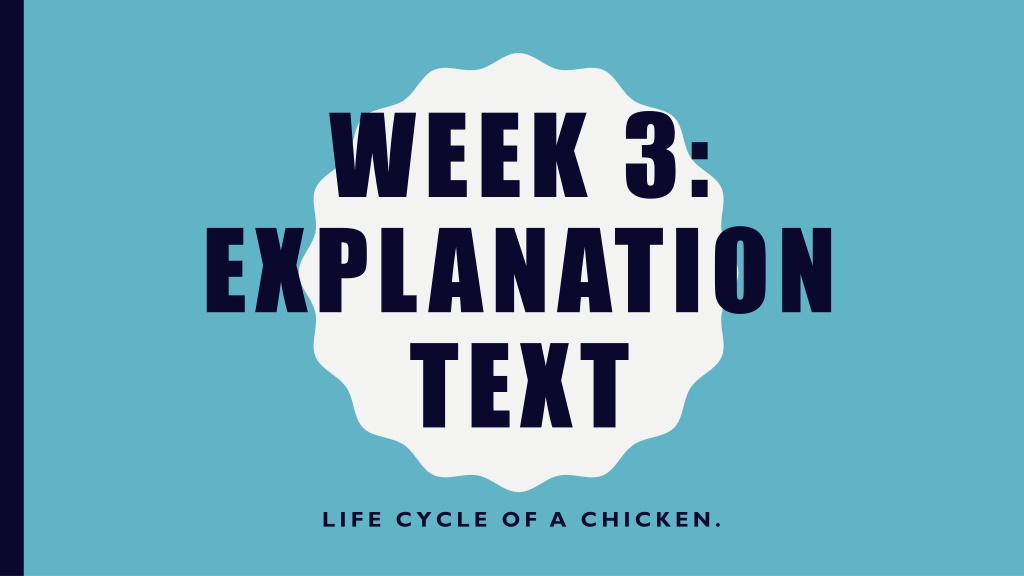

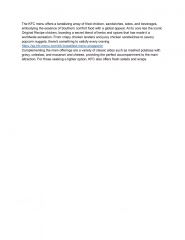
![Halal_Chicken_from_Brazil-_Ensuring_Quality_and_Authenticity[1]](/thumb/86918/halal-chicken-from-brazil-ensuring-quality-and-authenticity-1.jpg)

